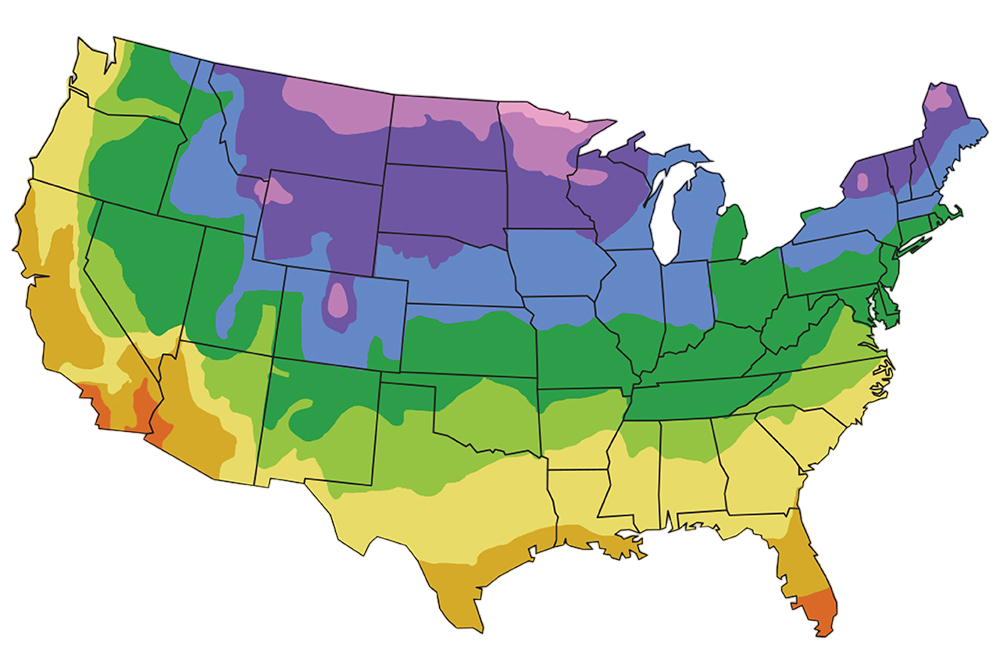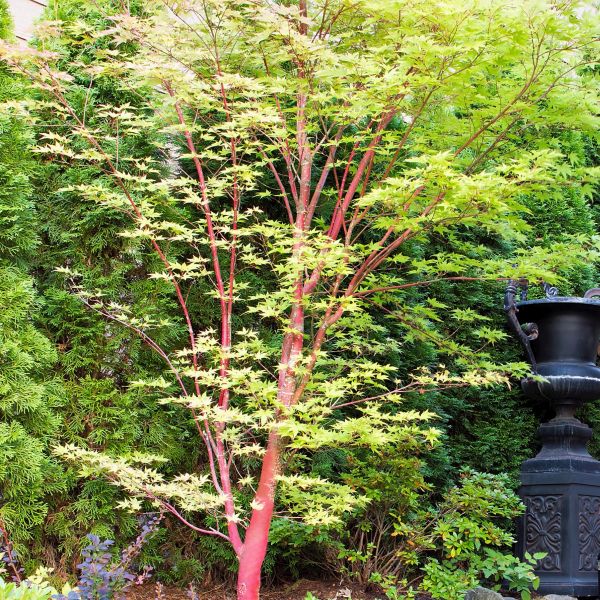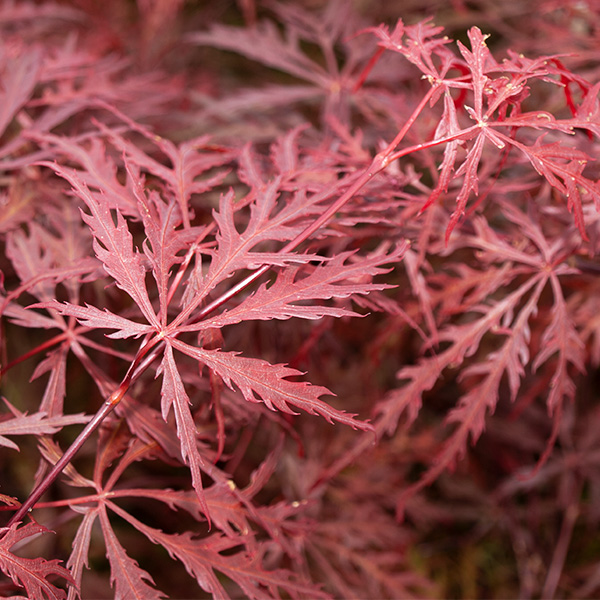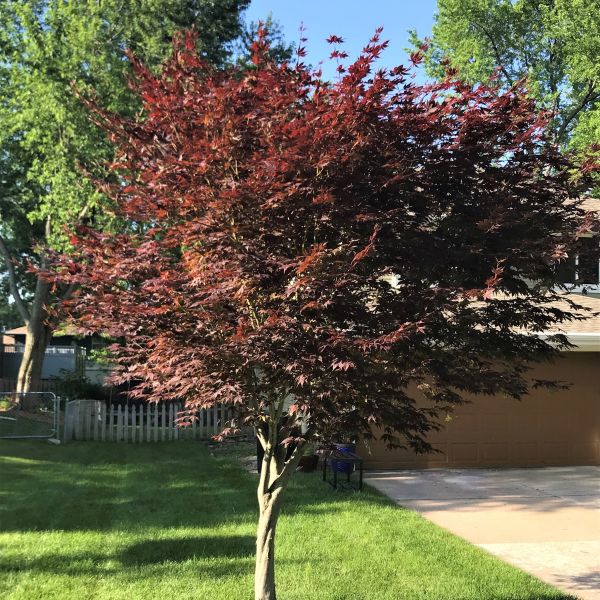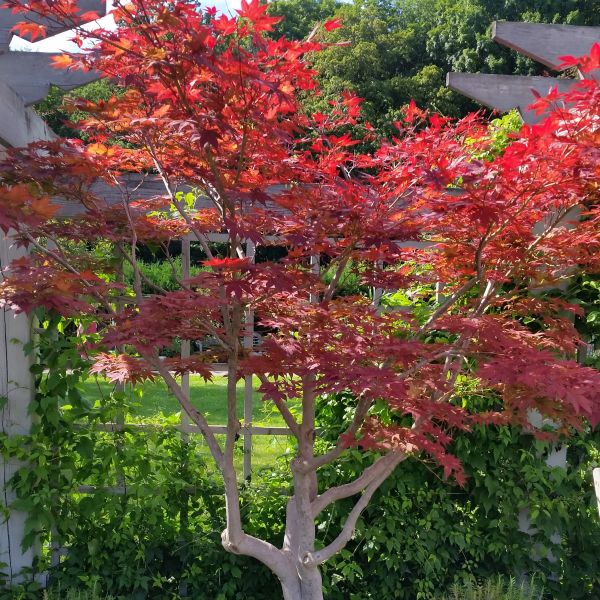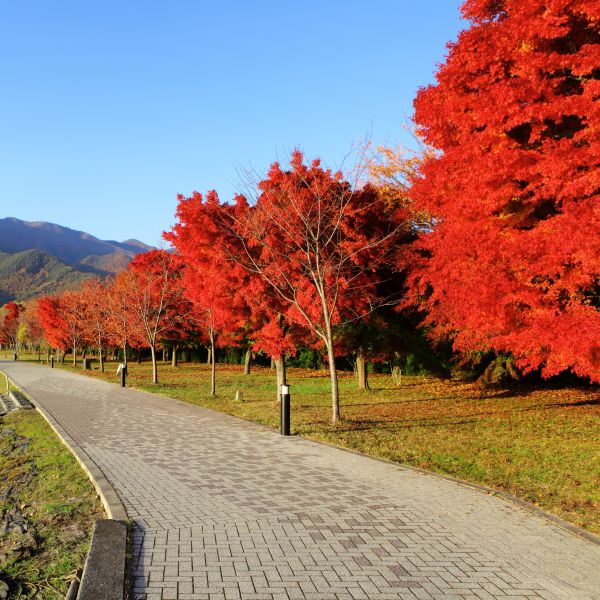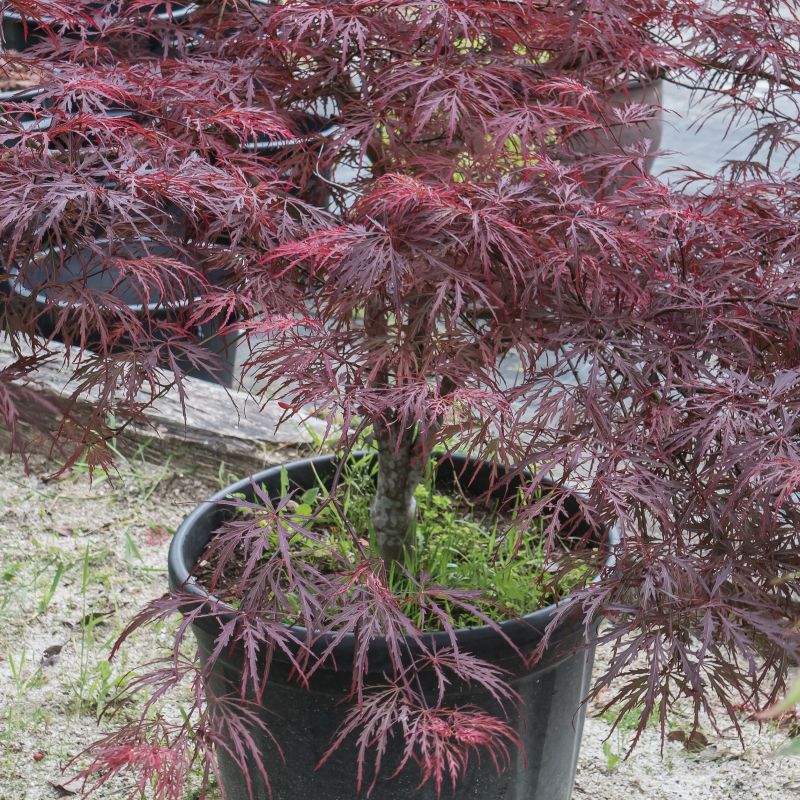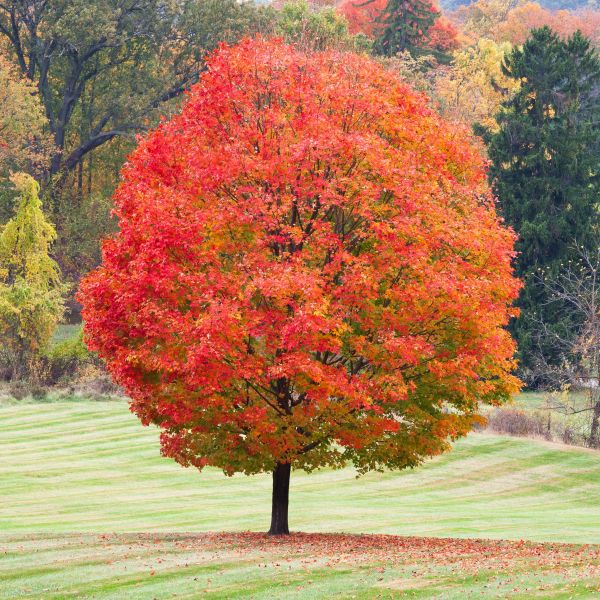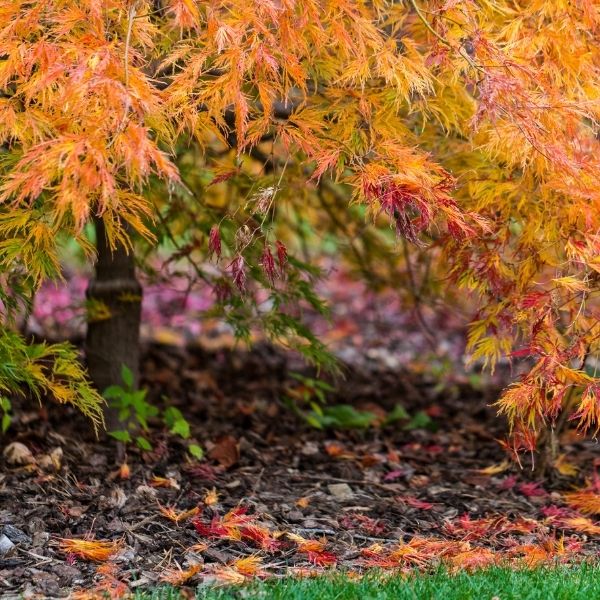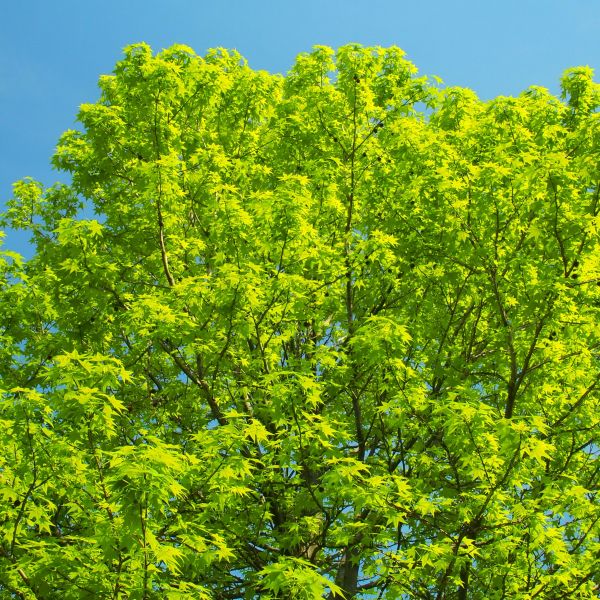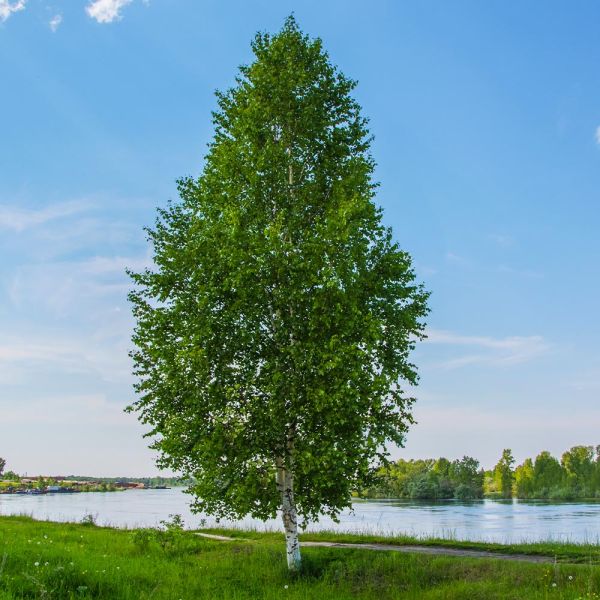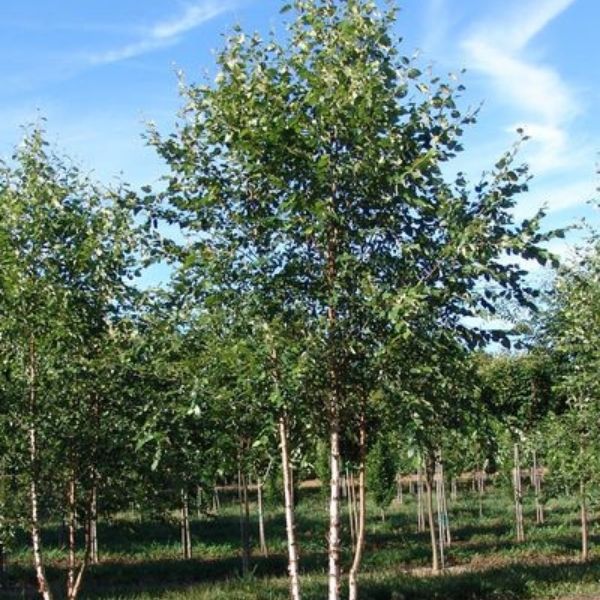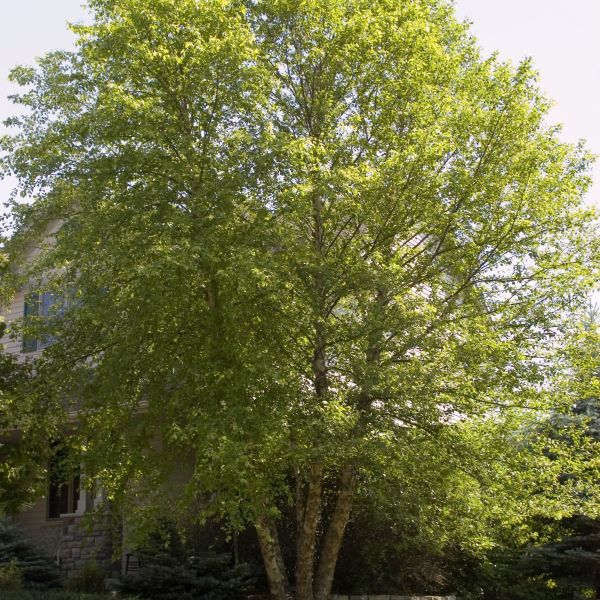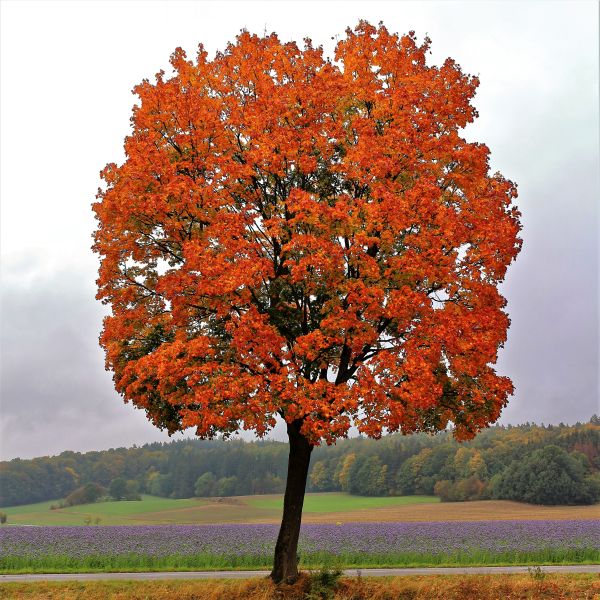
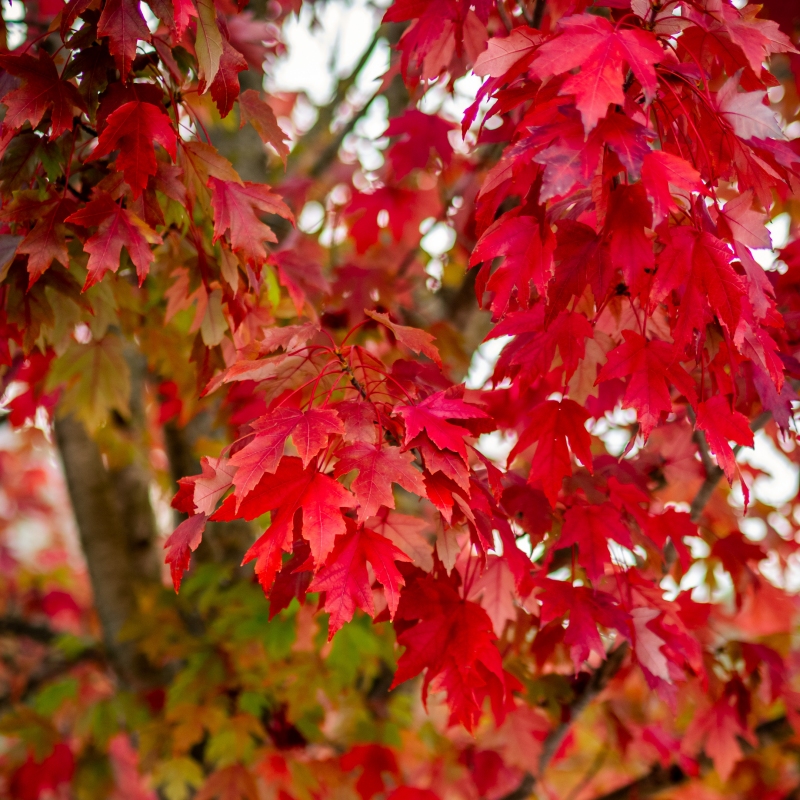
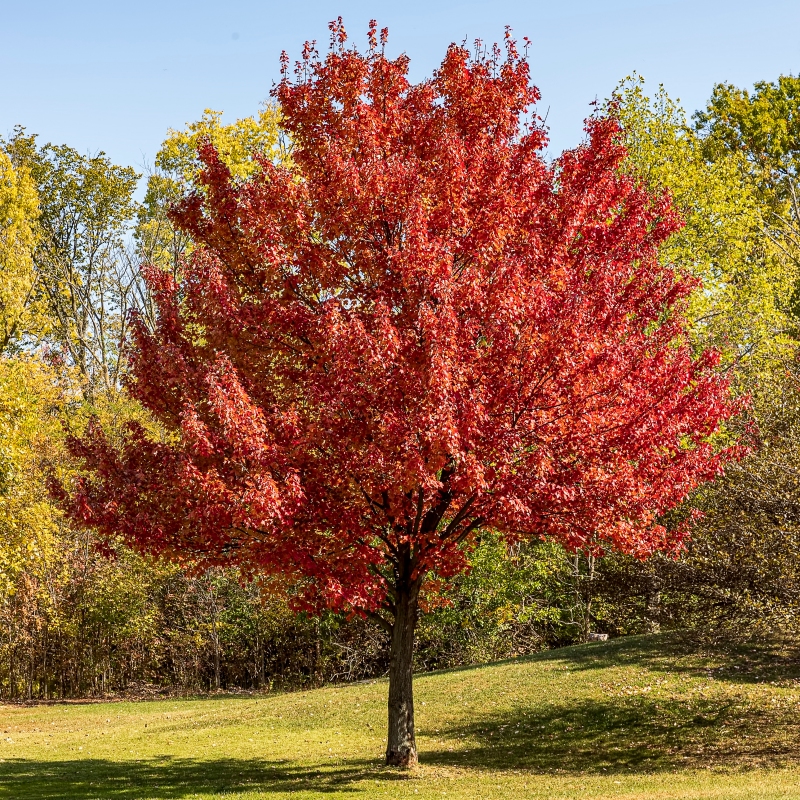
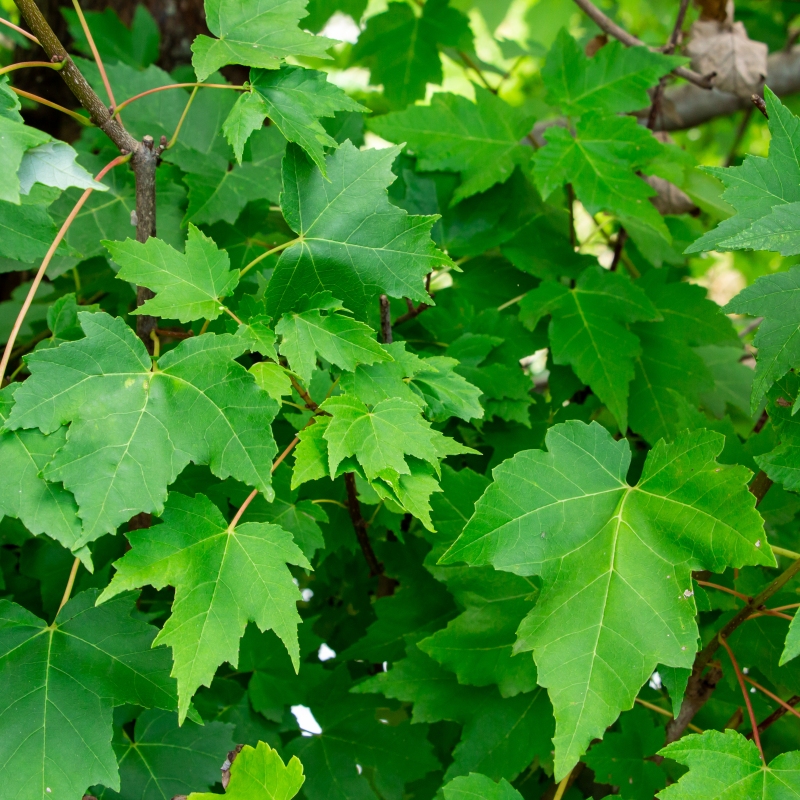
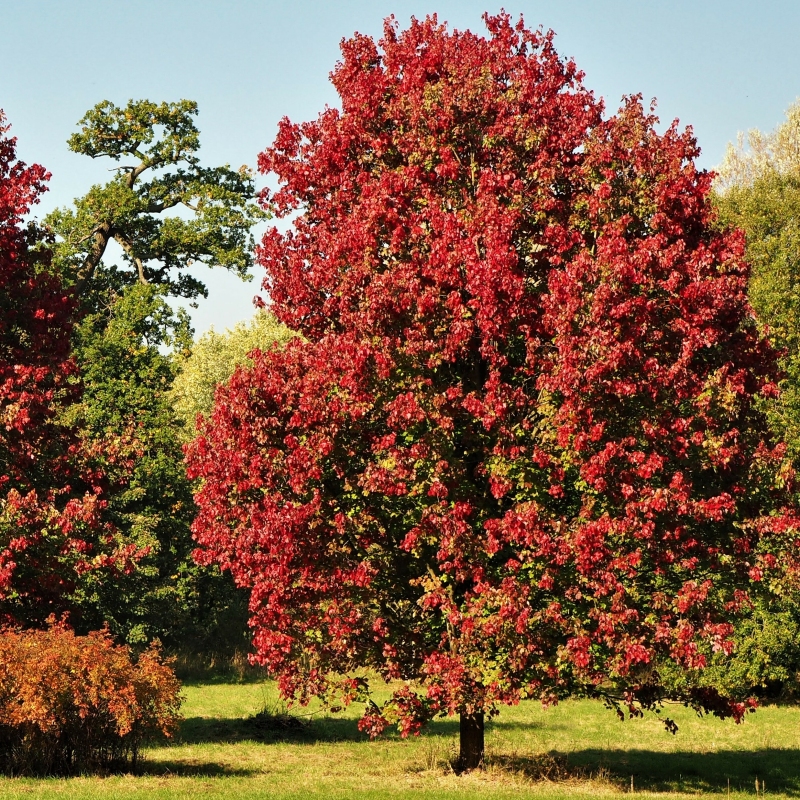
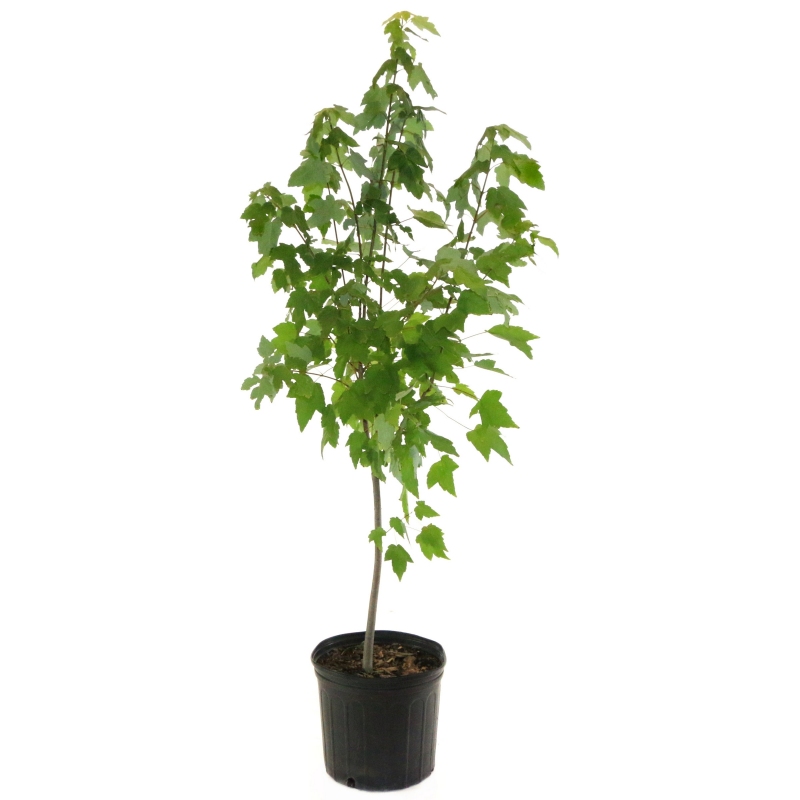
Red Maple Tree
Acer rubrum Red Maple
17 reviews
Red Maple Tree
Acer rubrum Red Maple
17 reviews
- Beautiful foliage that turns vibrant shades of red and orange in the fall
- Tolerant of various soil types and conditions
- Disease and pest resistant, resulting in low maintenance requirements
$86.00
$123.00
30% Off
- Ships to 43215 in 3-5 Days
- Free Shipping Over $150
- Plant Arrival Guarantee
- In Stock
- Free Plant Consult
$200
- Trade 3 Gallon
- 2.5 Gallon
We are sorry, product is currently out of stock due to seasonal availability. Please check the "Related plants available in your area" section below
Why Red Maple Tree?
The Red Maple tree, also known as Acer rubrum, is a popular choice among homeowners and landscapers for its stunning red foliage in the fall. This deciduous tree can grow up to 70 feet tall and is known for its fast growth rate. It thrives in a variety of soil types and is tolerant of wet conditions, making it a versatile and low-maintenance option for many landscapes.
Related plants available in your area
Sunlight
The Red Maple Tree requires full sunlight to partial shade, thriving best in areas that receive at least 6 hours of direct sunlight per day. It can still grow in partial shade, but may not develop the vibrant red foliage that it is known for in low light c
Watering
Red Maple Trees require regular watering, particularly during the first few years of growth. They prefer moist, well-draining soil and should be watered deeply once a week during dry periods. Avoid overwatering, as it can lead to root rot. Apply mulch to h
Fertilizing
Red Maple Trees typically require a balanced fertilizer with a ratio of 10-10-10 or 12-12-12. The fertilizer should be applied in early spring and late fall, following the recommended application rates on the product label to avoid over-fertilization.
Red Maple Tree (Acer rubrum Red Maple)
The Red Maple Tree, scientifically known as Acer rubrum, is a popular tree species native to North America. It is known for its vibrant red foliage in the fall, making it a stunning addition to any landscape. The leaves are medium-sized and are usually palmately lobed with serrated edges.
Red Maple Trees are deciduous and produce small red flowers in early spring before the leaves emerge. These flowers are followed by red winged seeds, also known as samaras, that twirl to the ground in late spring or early summer. The bark of the Red Maple Tree is smooth and gray when young, eventually turning darker and developing shallow furrows as the tree matures.
Red Maple Trees prefer full sun to partial shade and can adapt to a variety of soil types, including wet or dry conditions. They are commonly used as shade trees, ornamental trees, and in wildlife habitats due to their ability to attract birds and squirrels with their seeds.
This versatile tree is relatively low-maintenance and can thrive in a wide range of climates, making it a popular choice for landscaping projects. Consider planting a Red Maple Tree in your yard to enjoy its stunning fall colors and wildlife appeal.
Plant Information:
| Botanical Name: | Acer rubrum Red Maple |
| USDA Zones: | 3 - 9 |
| Mature Height: | 70 ft |
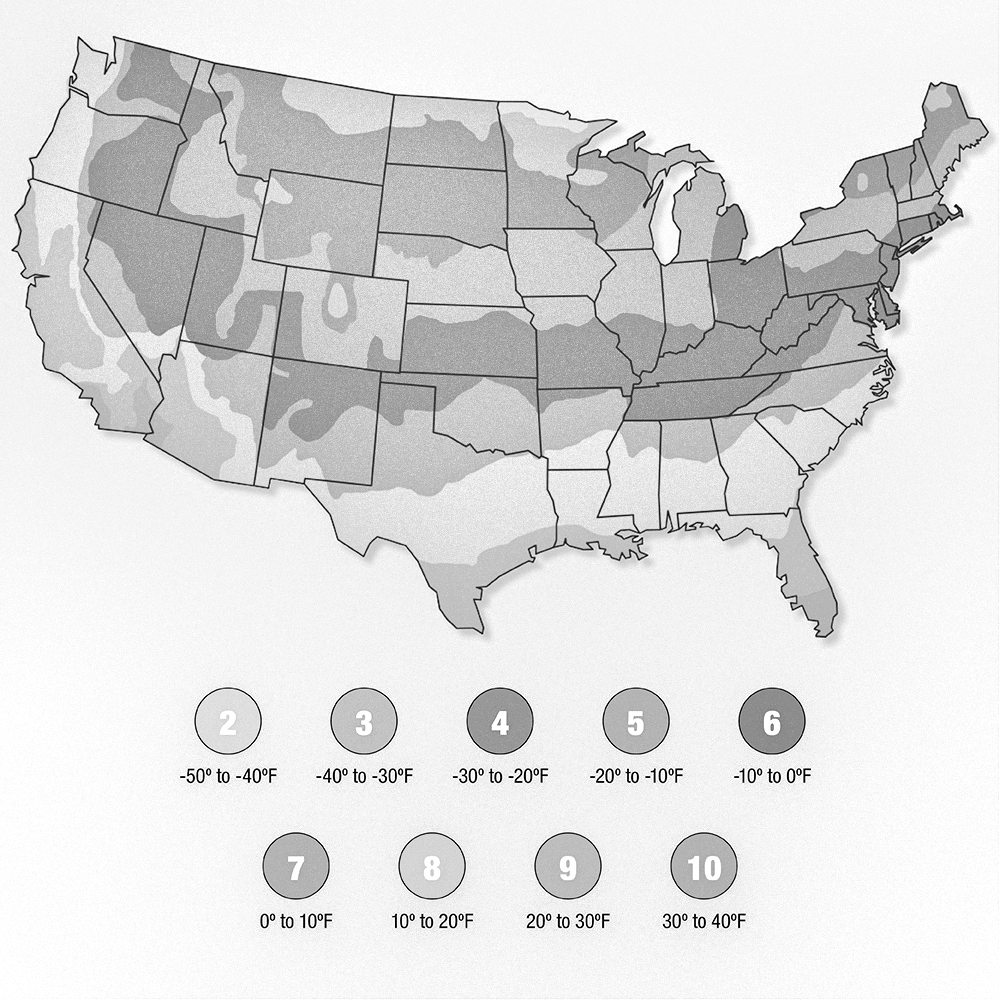



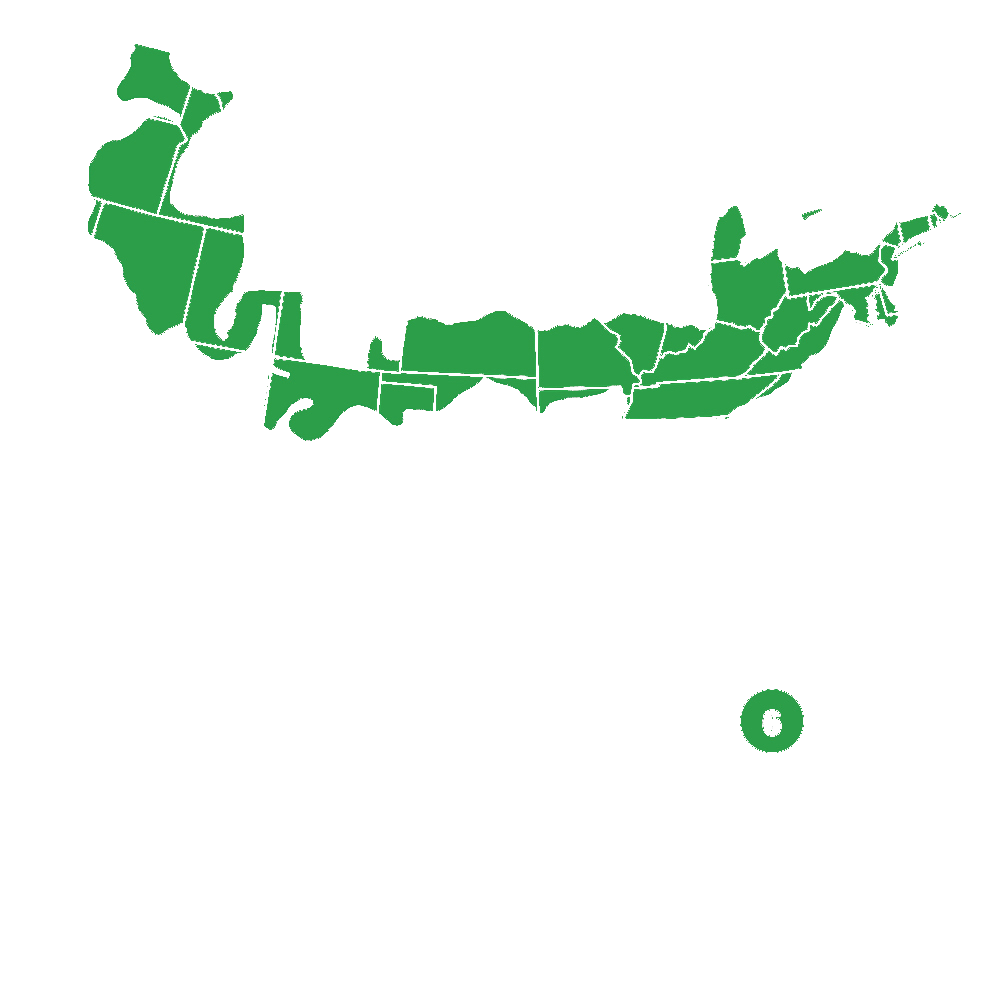

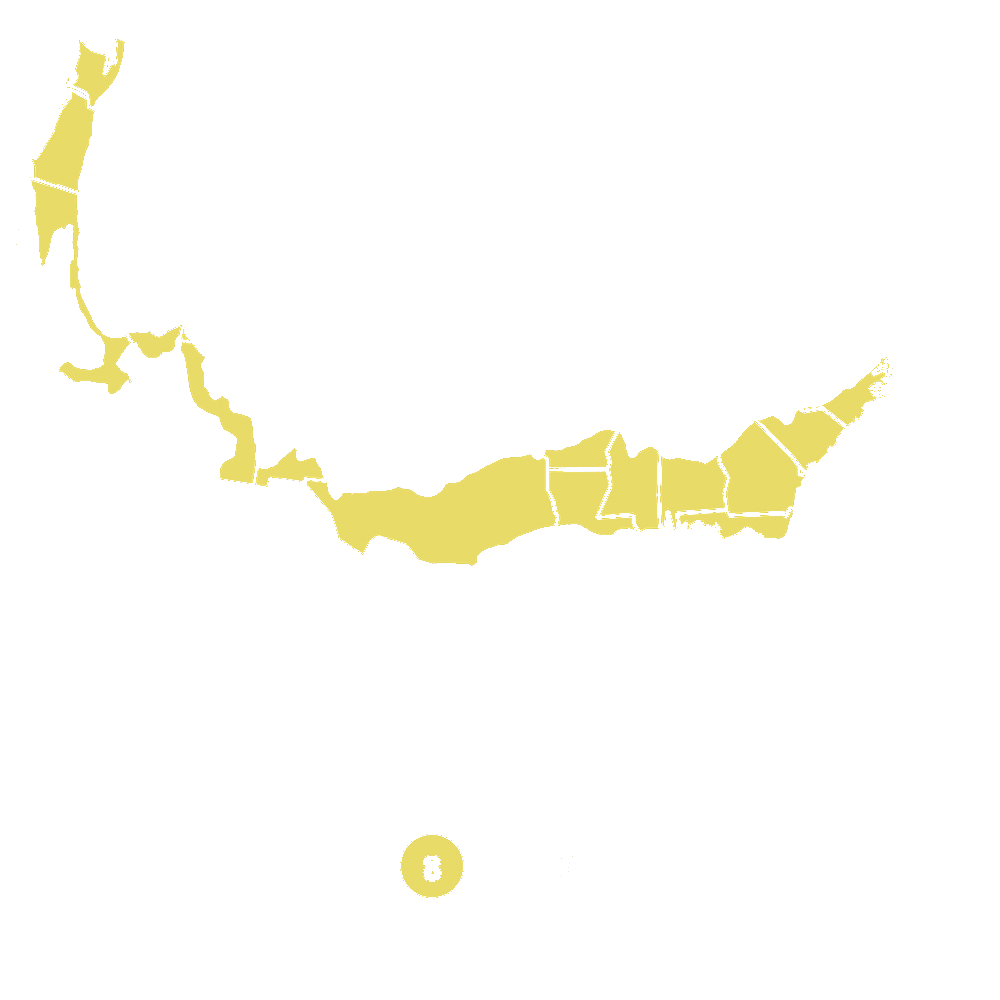
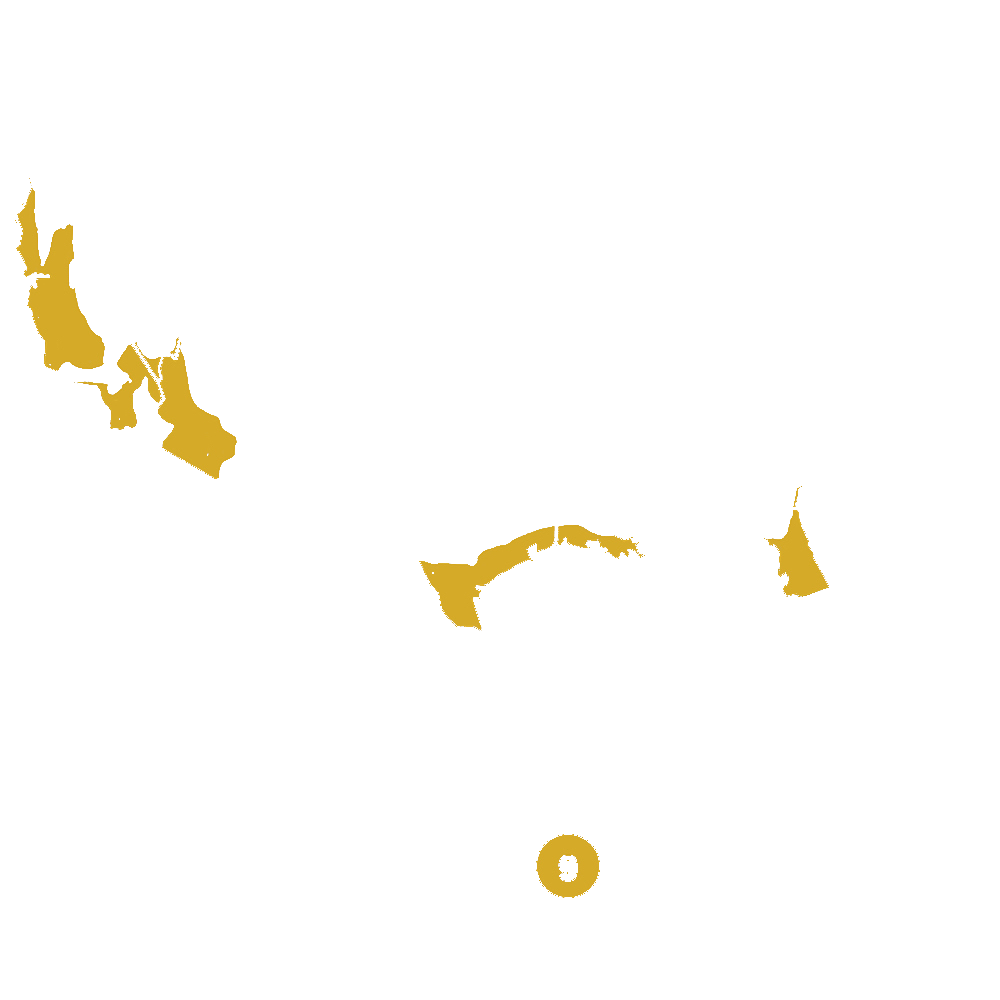
Pollination Info
Red Maple Tree Pollination
The Red Maple Tree (Acer rubrum) is a native tree to North America known for its striking red foliage in the fall. It typically blooms in early spring, producing clusters of small red flowers that are important for pollination.
Types of Pollinators
Red Maple trees are primarily wind-pollinated, meaning that they do not rely on insects for pollination. The small red flowers produce copious amounts of pollen that is carried by the wind to neighboring trees for fertilization.
Pollination Process
During the bloom period, the Red Maple tree releases large amounts of pollen into the air. This pollen is then carried by the wind to the female flowers of neighboring trees. Once the pollen reaches a female flower, it fertilizes the ovules within the flower, leading to the development of seeds.
Importance of Pollination
Pollination is essential for the reproduction of Red Maple trees. Without proper pollination, the tree would not be able to produce seeds, leading to a decline in population numbers. In addition, pollination plays a crucial role in maintaining genetic diversity within the species.
FAQ
Red Maple Tree (Acer rubrum Red Maple) FAQ
1. What is a Red Maple Tree?
The Red Maple tree, scientifically known as Acer rubrum, is a deciduous tree native to North America. It is known for its vibrant red foliage in the fall.
2. How tall can a Red Maple Tree grow?
Red Maple Trees can grow up to 40-60 feet tall, with a spread of 30-40 feet.
3. What are the soil and sunlight requirements for Red Maple Trees?
Red Maple Trees prefer well-drained, acidic soil and full sun to partial shade.
4. When is the best time to plant a Red Maple Tree?
The best time to plant a Red Maple Tree is in the spring or fall, when the tree is dormant.
5. How often should a Red Maple Tree be watered?
Water newly planted Red Maple Trees regularly, ensuring the soil stays moist but not waterlogged. Once established, they are drought-tolerant and require less frequent watering.
6. How can I care for my Red Maple Tree?
Prune dead or damaged branches, fertilize annually in the spring, and mulch around the base of the tree to retain moisture and prevent weeds.
7. Are Red Maple Trees susceptible to any diseases or pests?
Red Maple Trees are susceptible to various diseases and pests, including verticillium wilt, scale insects, and leafhoppers. Regular inspection and proper care can help prevent infestations.
8. When do Red Maple Trees typically bloom?
Red Maple Trees typically bloom in early spring, producing clusters of small red flowers.
9. Are Red Maple Trees a good choice for landscaping?
Red Maple Trees are popular for landscaping due to their stunning fall foliage, fast growth rate, and adaptability to various soil conditions.
10. Can I plant a Red Maple Tree near my house?
It is not recommended to plant Red Maple Trees too close to structures, as their shallow root system can cause damage to foundations and pipes. Plant them at least 20-30 feet away from buildings.
Planting & Care
Planting and Care for Red Maple Tree
The Red Maple tree, also known as Acer rubrum Red Maple, is a popular choice for landscaping due to its vibrant fall colors and adaptability to different soil conditions. Here are some tips for planting and caring for your Red Maple tree:
Planting:
- Choose a location with full sun to partial shade and well-draining soil.
- Dig a hole that is twice the width of the tree's root ball and just as deep.
- Place the tree in the hole and backfill with soil, tamping it down gently to remove air pockets.
- Water thoroughly after planting to help the tree establish its roots.
Care:
- Water the tree regularly, especially during dry periods, to keep the soil moist but not waterlogged.
- Apply a layer of mulch around the base of the tree to help retain moisture and suppress weeds.
- Prune any dead or damaged branches in late winter or early spring to promote healthy growth.
- Fertilize the tree in the spring with a balanced fertilizer to provide nutrients for growth.
- Protect the tree from pests and diseases by inspecting it regularly and taking appropriate measures if needed.
With proper planting and care, your Red Maple tree can provide beauty and shade for many years to come.
Check Out These Verified Customer Reviews:
Customer Reviews
4.7 out of 5 based on 17 reviews
Thank you! Your review has been submitted.
Overall, a fantastic experience buying from Acer, will definitely be a repeat customer.
Fast shipment, received my tree sooner than expected which was a pleasant surprise.
Highly recommend Acer Maple 'Red' T3G, a beautiful addition to any garden.
Item has been added to your cart.

